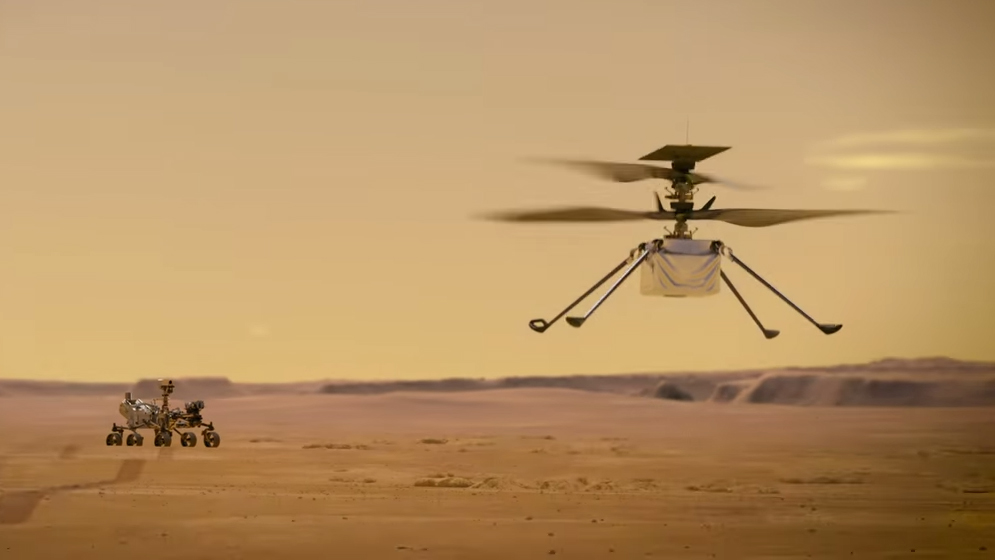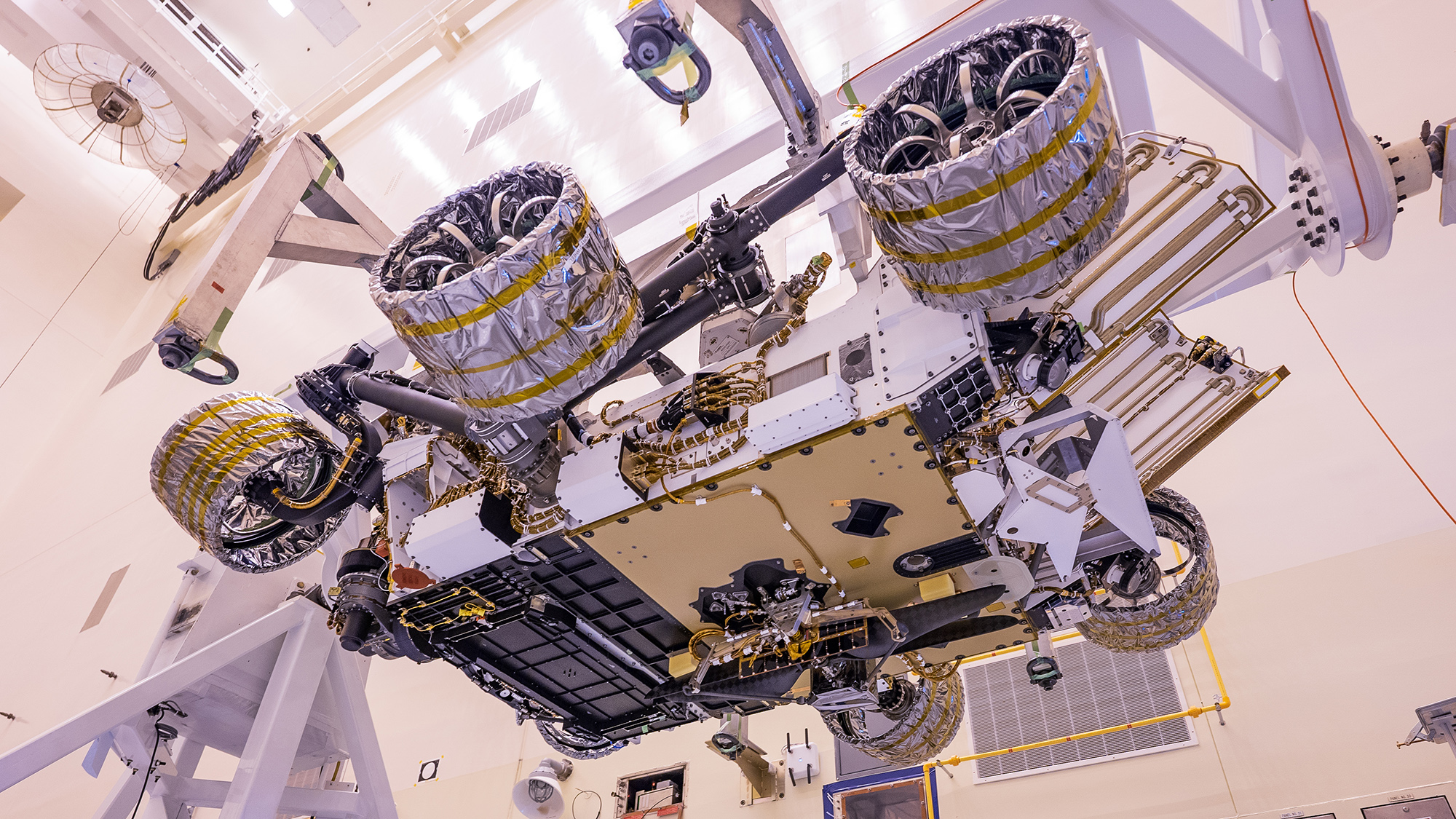The first interplanetary helicopter is on its way to Mars
NASA's Ingenuity Mars helicopter launched with the Perseverance rover on July 30.

The first helicopter designed to fly on another planet is now on its way to Mars.
NASA's Mars helicopter, called Ingenuity, is hitching a ride to the Red Planet with the agency's Mars 2020 Perseverance rover, which lifted off on an Atlas V rocket from Florida's Cape Canaveral Air Force Station today (July 30).
Tucked beneath the rover's belly, Ingenuity will spend the next six months en route to Mars. The mission is scheduled to land on Mars on Feb. 18, 2021, and within the next few months the rotorcraft will attempt the first-ever flight through another planet's atmosphere.
Related: Meet Ingenuity: Alabama teen names NASA's Mars helicopter
Live Updates: NASA's Mars rover Perseverance mission in real time
"We as human beings have never flown or rotorcraft outside of our own Earth's atmosphere, so this will actually be a very much a Wright Brothers moment, except on another planet," Mimi Aung, NASA's Ingenuity Mars Helicopter project manager, said in a news conference on Tuesday (July 28).
While NASA and other space agencies around the world have sent landers, orbiters and rovers to the Red Planet, no one has attempted to fly an aircraft on another planet before. On Mars the atmosphere is much thinner than it is on Earth, which means there's less air to generate lift and more technical challenges in designing a craft that will stay aloft.
"Flying a rotorcraft at Mars is very difficult. First and foremost, the atmosphere there is very thin, about 1% compared to the Earth's atmospheric density here," Aung said. "To build a vehicle that can fly at Mars, it has to be very light and be able to spin very fast."
Get the Space.com Newsletter
Breaking space news, the latest updates on rocket launches, skywatching events and more!
In photos: NASA's Mars Perseverance rover mission to the Red Planet

Ingenuity weighs about 4 lbs. (1.8 kilograms) and has two counter-rotating blades that measure about 4 feet (1.2 meters) long. Those blades should spin at a rate of about 2,400 revolutions per minute, NASA said in Ingenuity's mission description. To test the helicopter, NASA simulated the Martian atmosphere in a testing chamber at the agency's Jet Propulsion Lab in Pasadena, California.
While Ingenuity is only an experimental mission — its primary objective is to test powered flight on Mars — a successful flight could shape the future of exploration on Mars.
For robotic missions like the Perseverance rover, helicopters could scout the Martian terrain and help plan driving routes. With that same aerial view, rotorcraft could also be used to study the planet's geology from a different perspective, and they could even help astronauts explore Mars someday, NASA said.
"This Mars helicopter Ingenuity could lead to the opening up of a whole new way to explore space" and to take "exploration missions to the aerial dimension," Aung said.
Email Hanneke Weitering at hweitering@space.com or follow her @hannekescience. Follow us on Twitter @Spacedotcom and on Facebook.
Join our Space Forums to keep talking space on the latest missions, night sky and more! And if you have a news tip, correction or comment, let us know at: community@space.com.

Hanneke Weitering is a multimedia journalist in the Pacific Northwest reporting on the future of aviation at FutureFlight.aero and Aviation International News and was previously the Editor for Spaceflight and Astronomy news here at Space.com. As an editor with over 10 years of experience in science journalism she has previously written for Scholastic Classroom Magazines, MedPage Today and The Joint Institute for Computational Sciences at Oak Ridge National Laboratory. After studying physics at the University of Tennessee in her hometown of Knoxville, she earned her graduate degree in Science, Health and Environmental Reporting (SHERP) from New York University. Hanneke joined the Space.com team in 2016 as a staff writer and producer, covering topics including spaceflight and astronomy. She currently lives in Seattle, home of the Space Needle, with her cat and two snakes. In her spare time, Hanneke enjoys exploring the Rocky Mountains, basking in nature and looking for dark skies to gaze at the cosmos.









